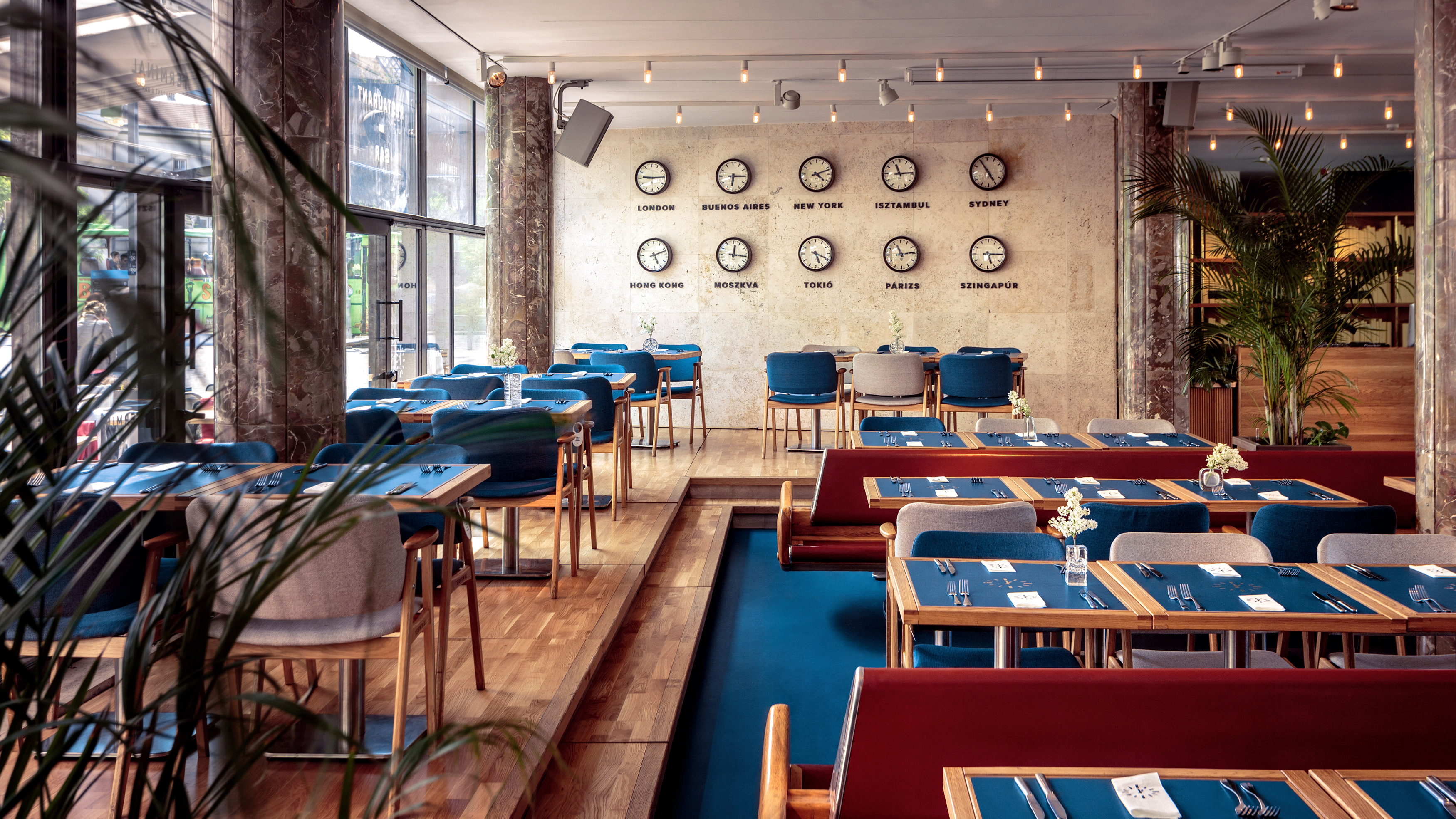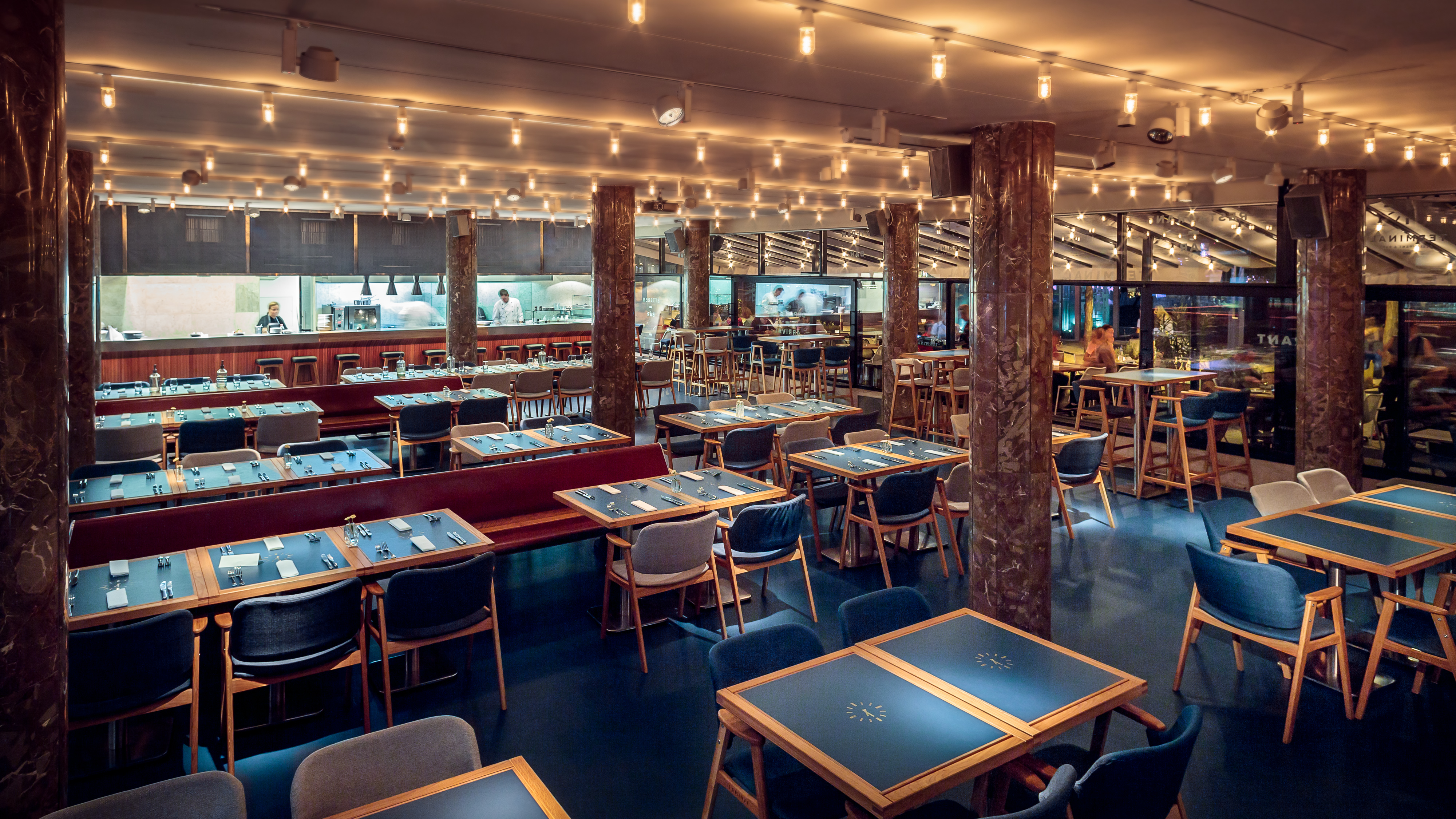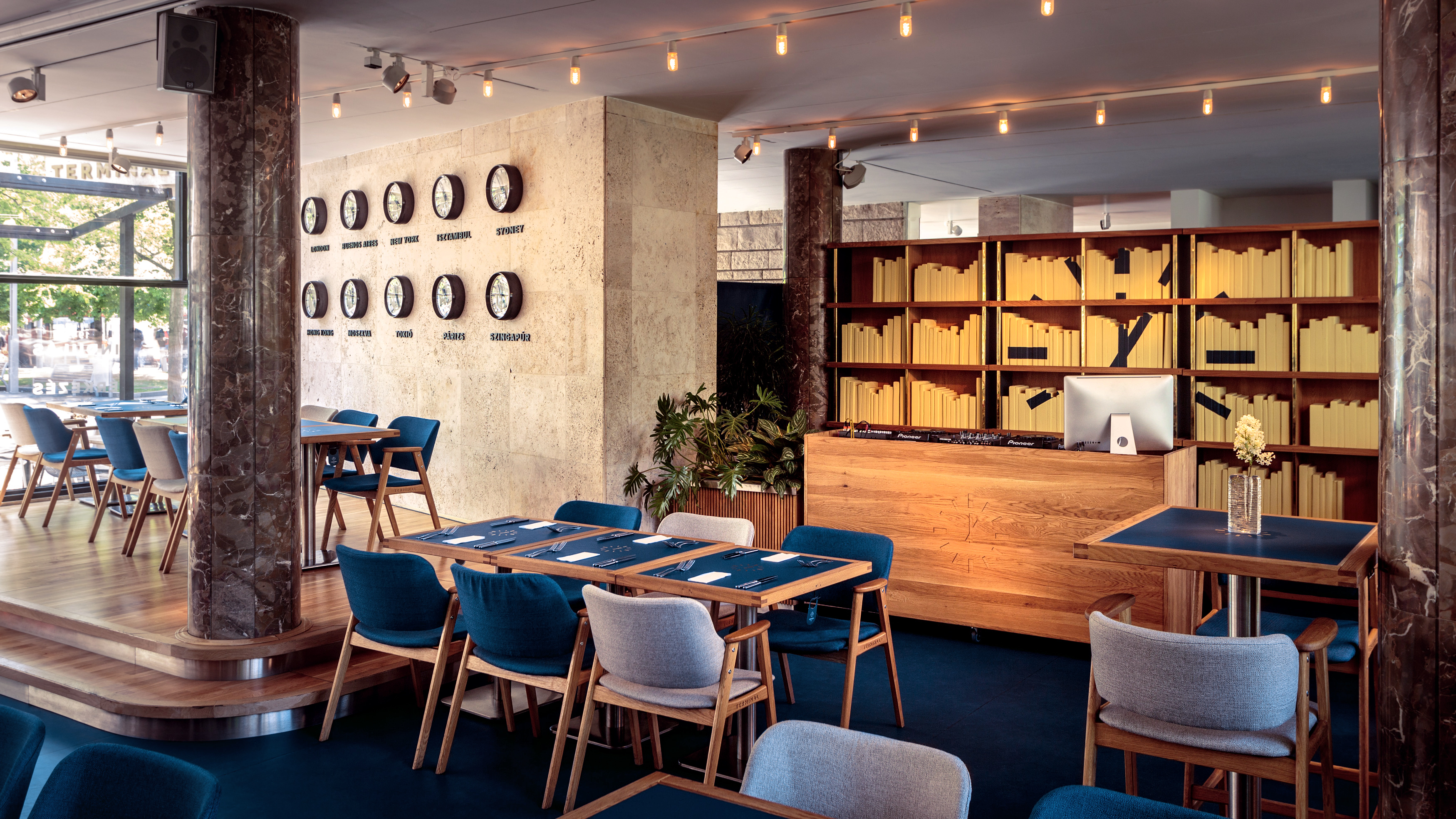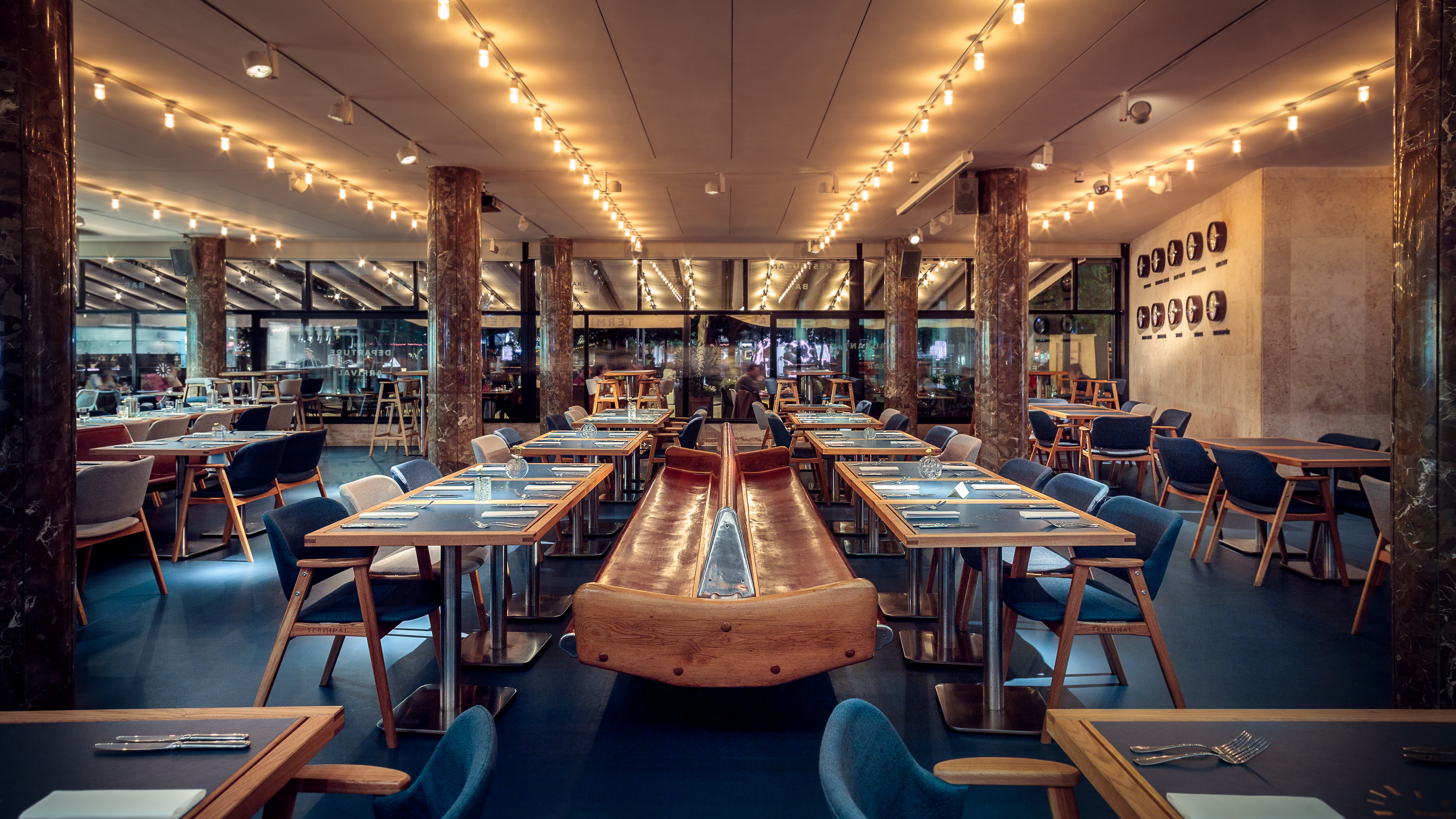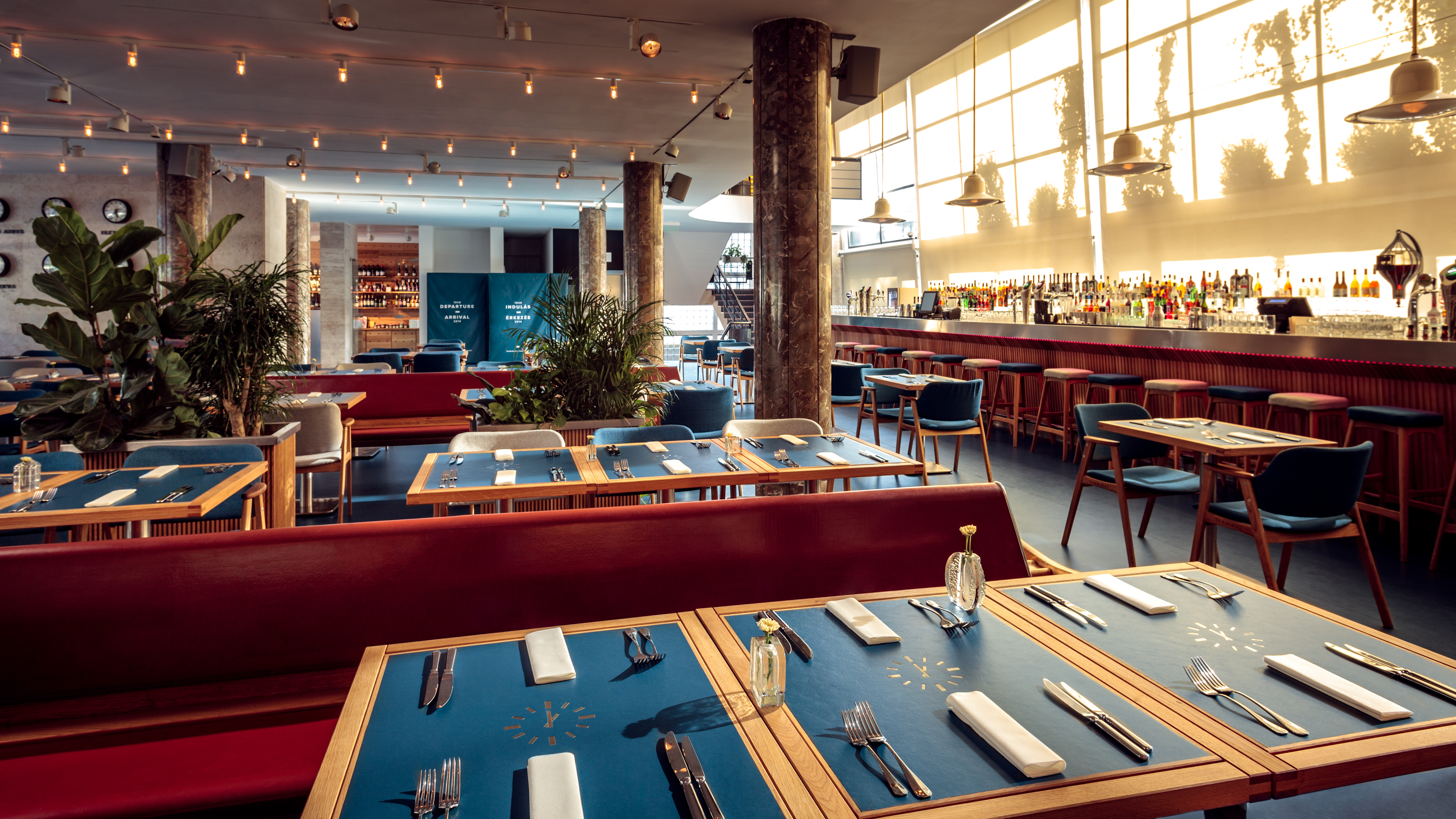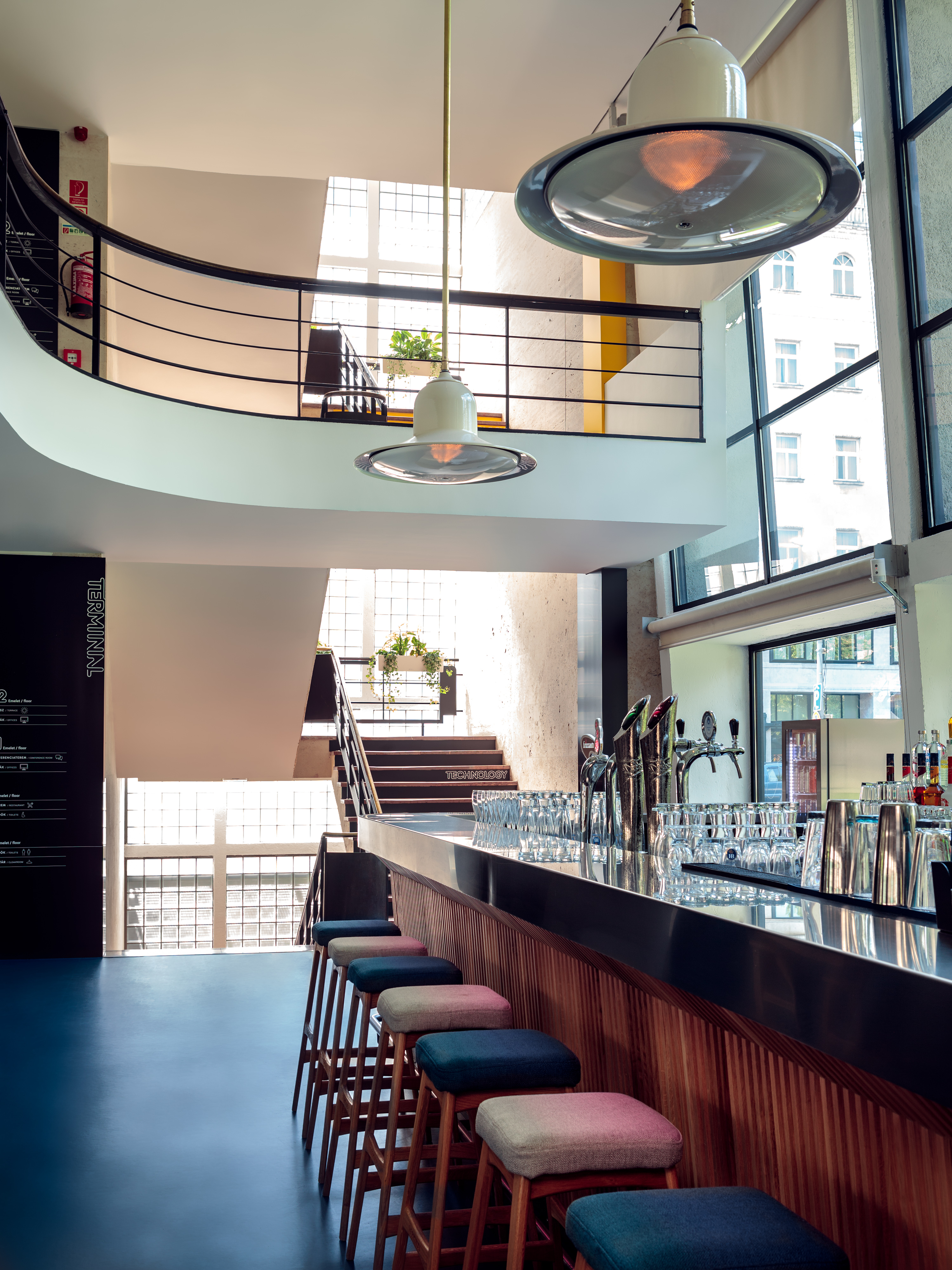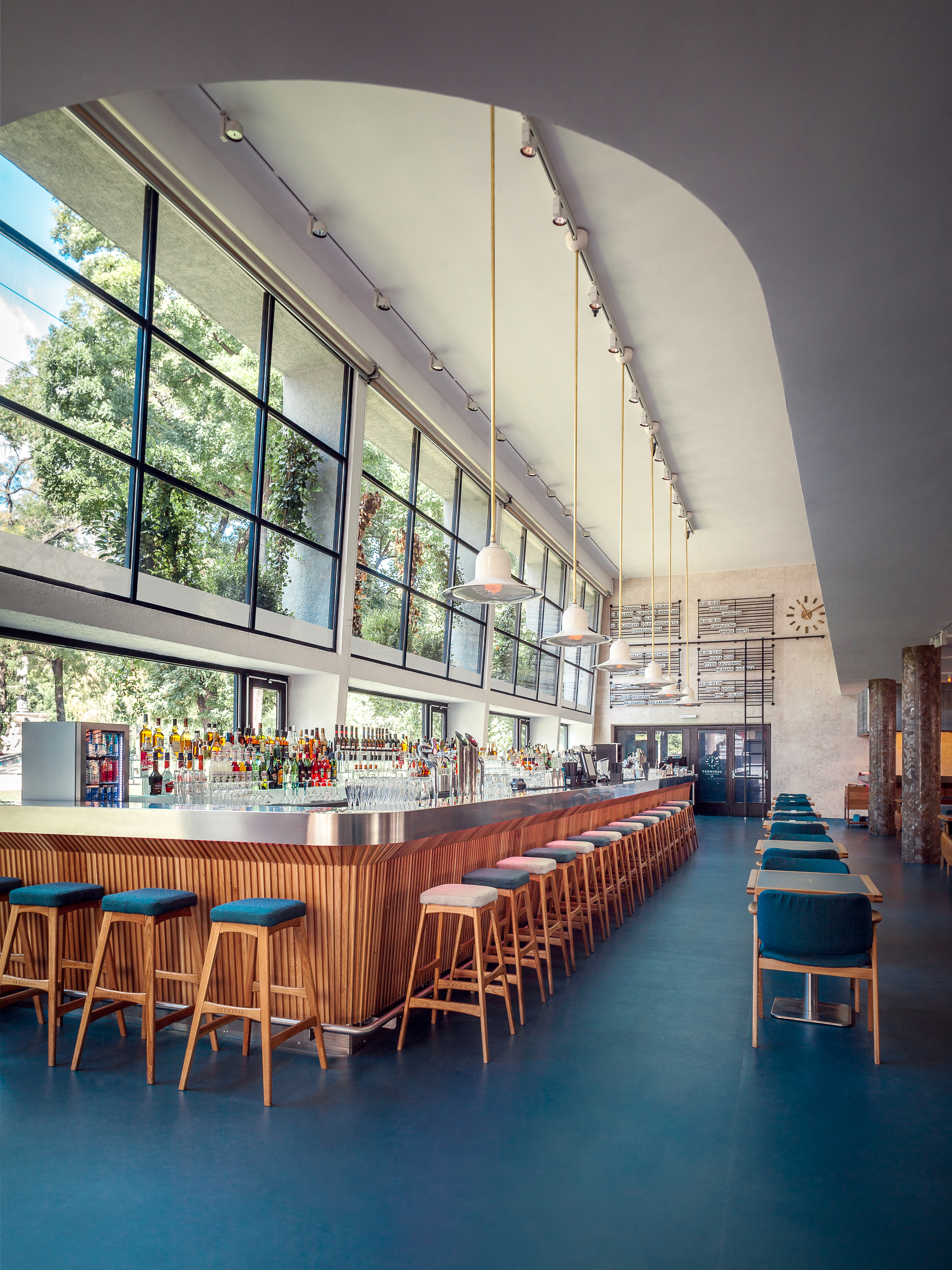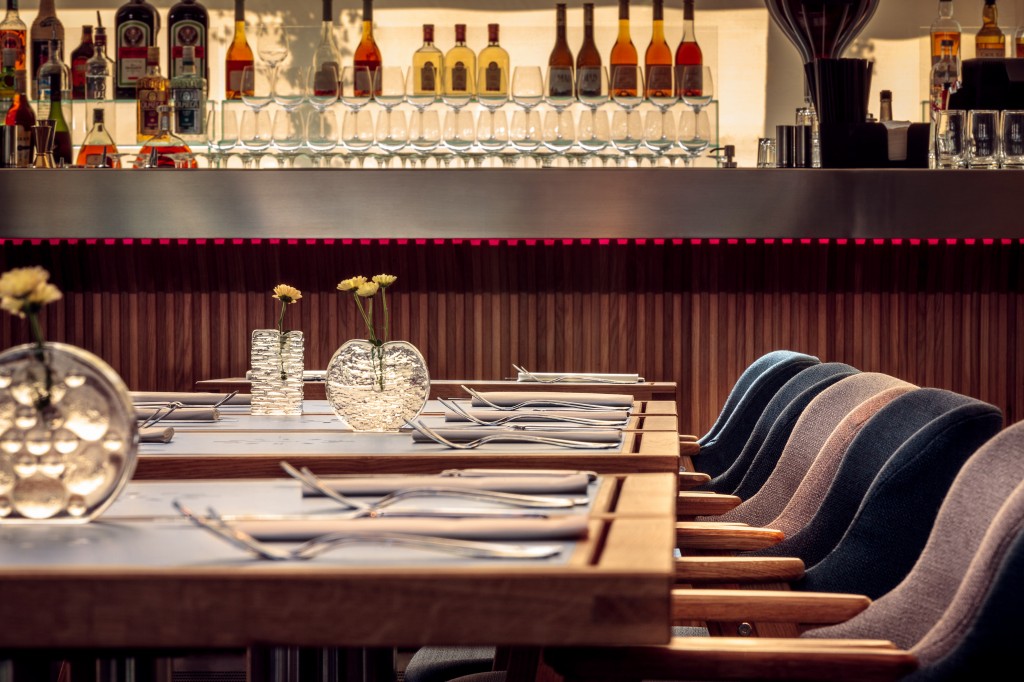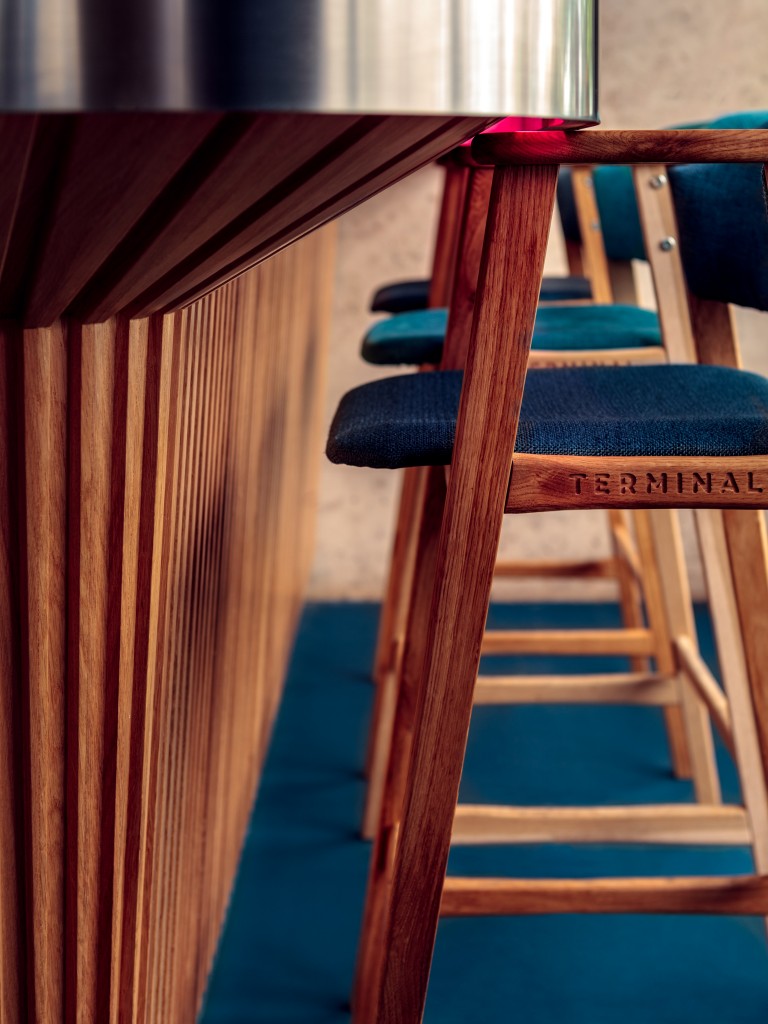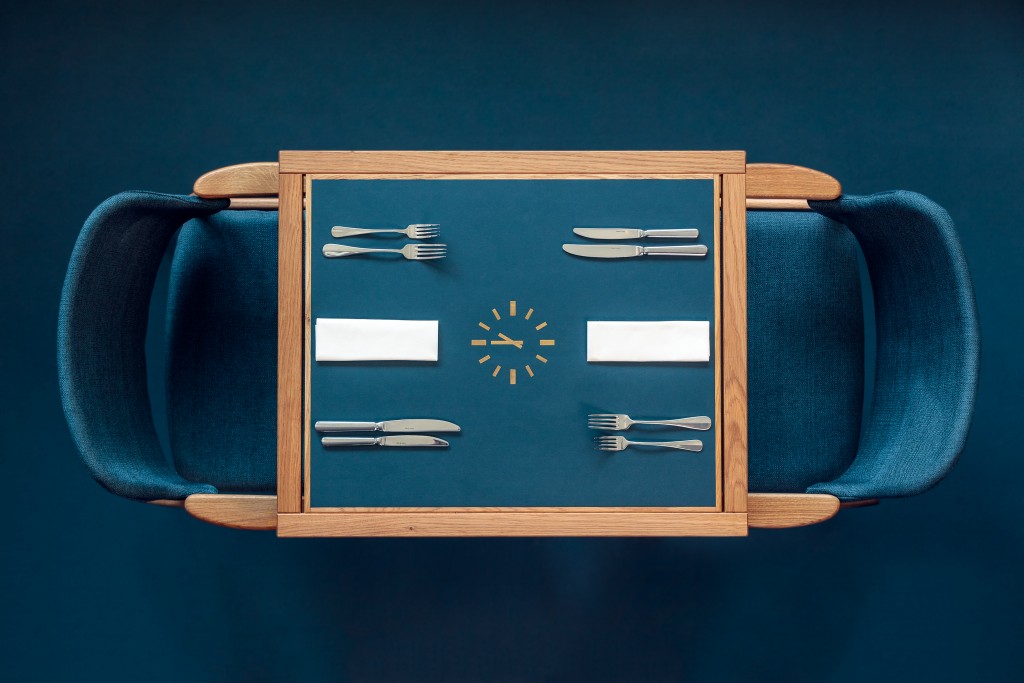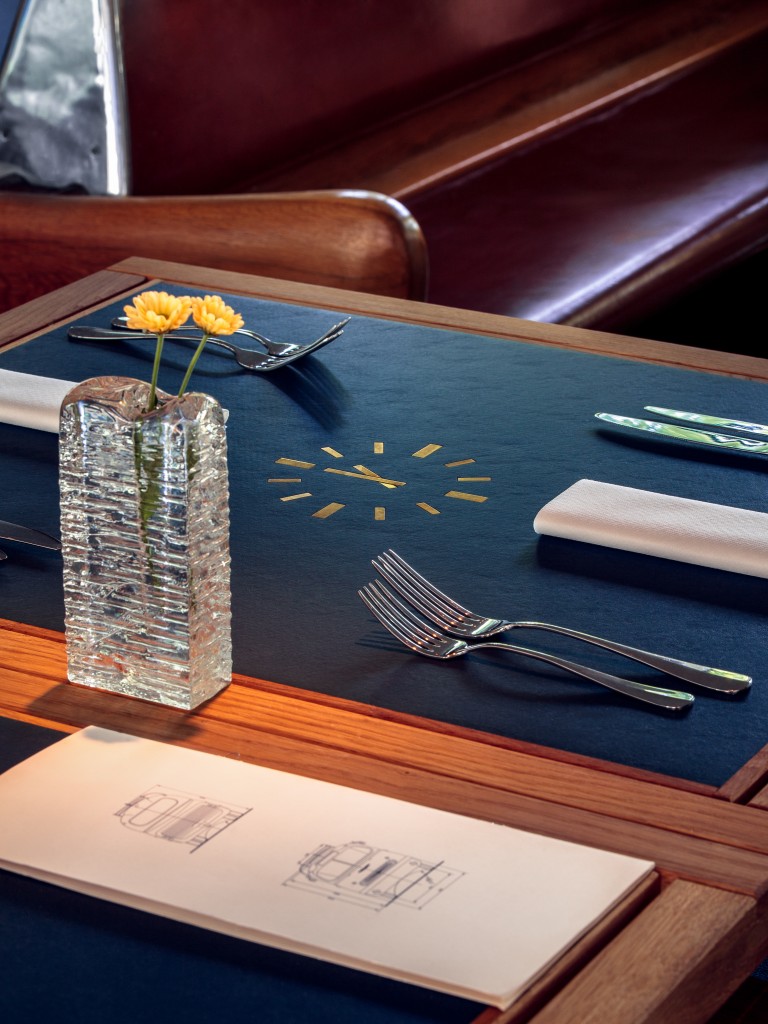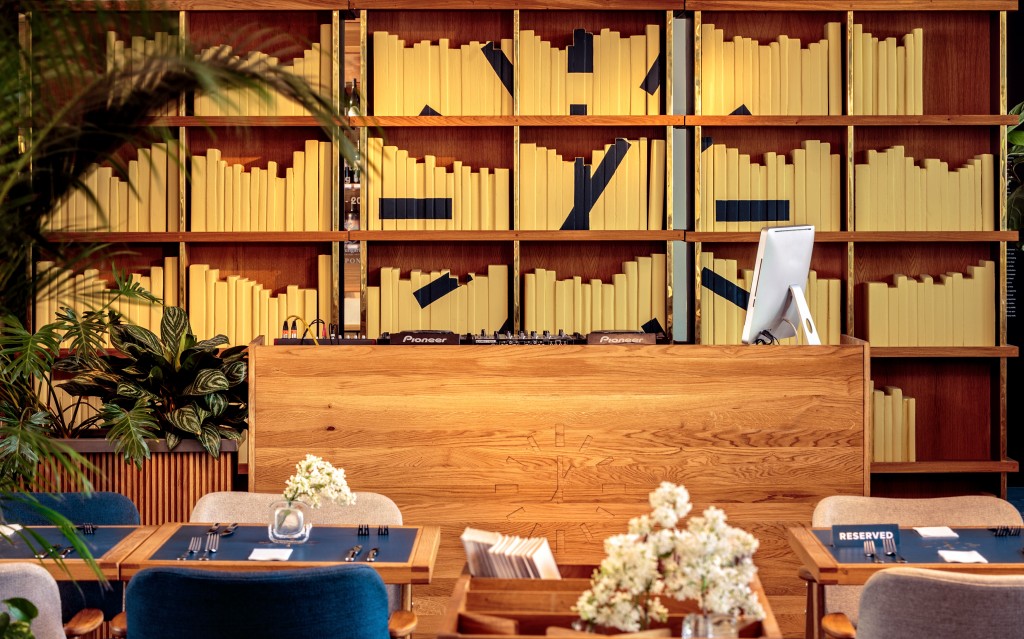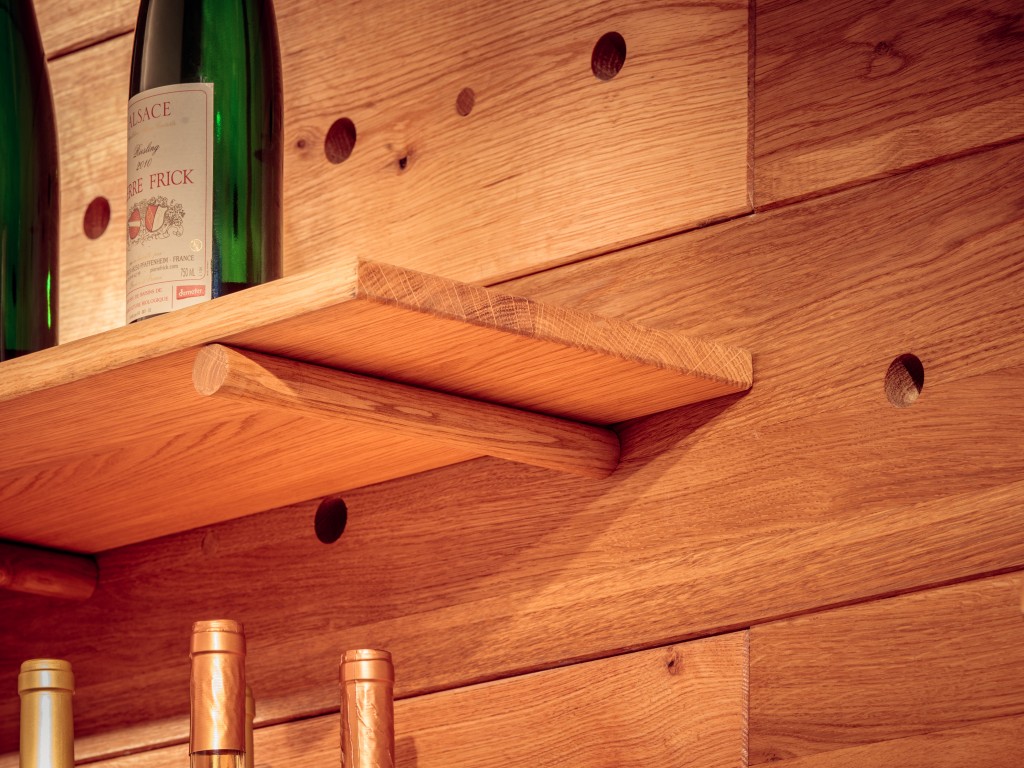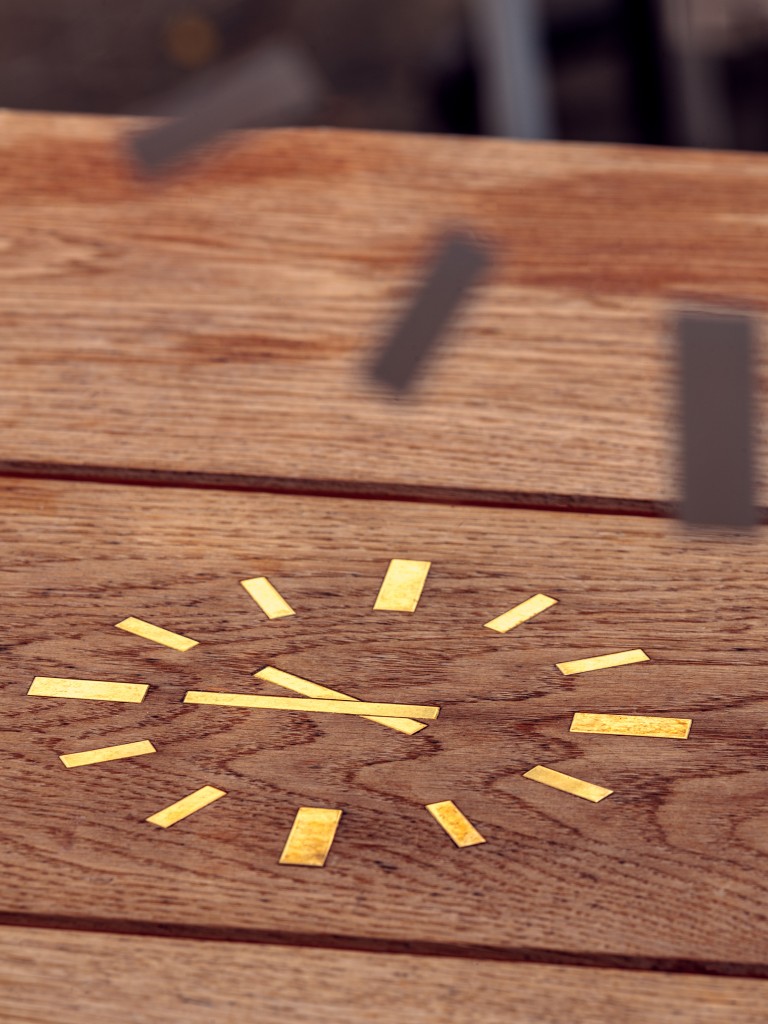Terminal
Terminal Restaurant opened at Erzsébet Square in Budapest, Hungary in 2014. It was a reinterpretation of a bus station’s waiting hall built in 1949 by István Nyíri. This national monument’s renewal started in 2004 in order to accommodate Design Terminal, the national center for creative industries in Budapest.
We believed it was essential to respect and pay special attention to the building’s late-modern style, while we created a restaurant and bar in the transparent and light waiting room. The aim was to design a place that highlights the original values, but also differentiates itself from them in a way. The concept, which is based on the consistency of the graphic and interior design, developed from the bus station’s waiting hall theme, acknowledging the original function of the building.
The menu on the wall that is resembling a schedule board, the original ’waiting hall’ benches and the clock that has been serving the building from the very beginning are making a perpetual connection between the present and the past. The guests feel separated in time and space behind the massive glass walls and they can have their lunch in a calm atmosphere in spite of the milling crowds of the main square.
The newly applied interior design elements – such as the freestanding counters and the open plan kitchen – act as furniture, not competing but completing the building. They become the crown jewels of the place with their wooden coating based on the original interior. The usage of oak, linoleum and copper creates an elegant, yet youthful impression inside, while fitting the huge surfaces covered with high-quality travertine from the best local suppliers. These new materials, along with the vegetation lighten and soften up the space making it cozy and casual. Although the shapes and the materials of the uniquely designed furniture invoke the building’s original style, they were sensibly fabricated through modern methods to make them ageless.
Looking at the color combinations – where the oak’s brown is paired with copper and the blue-white colors inherited from Ikarus (old Hungarian bus factory) buses – also generates crisp and playful environment.

